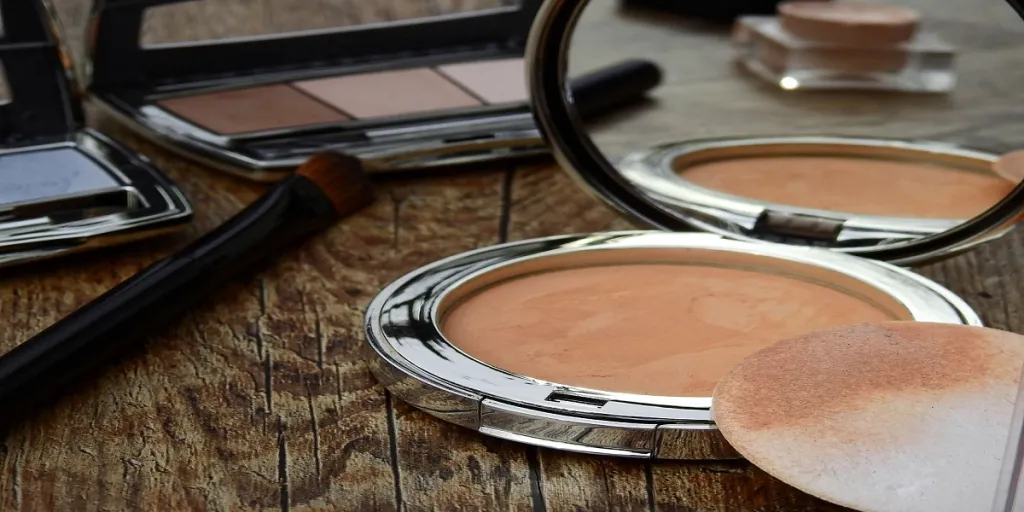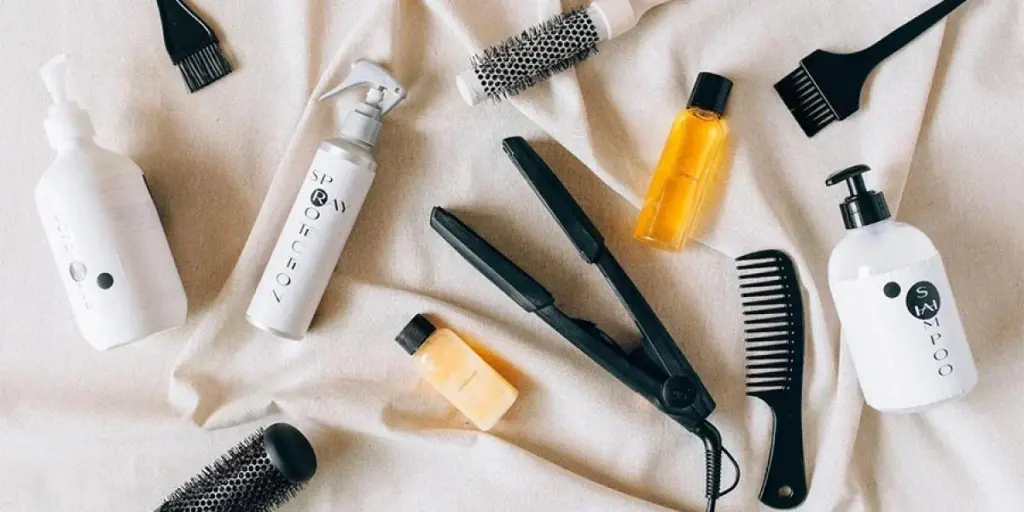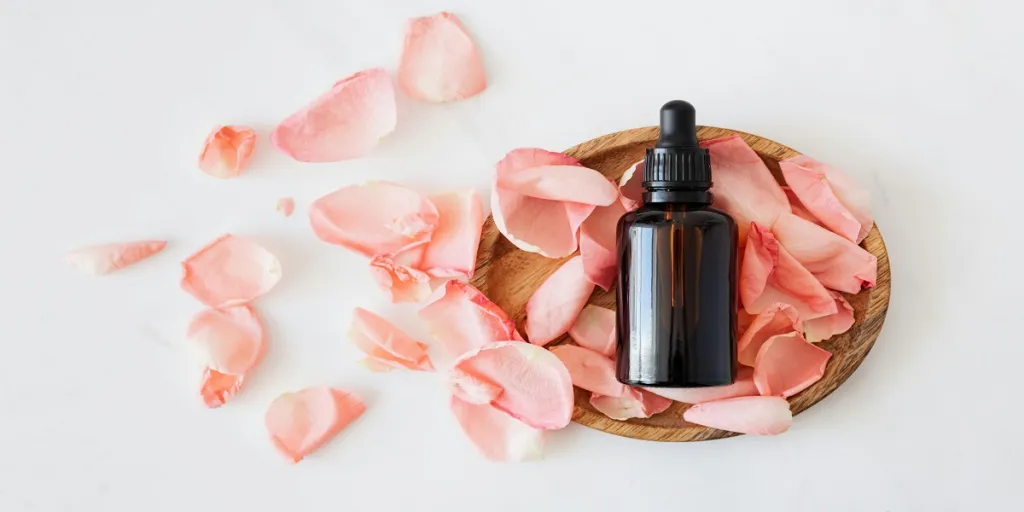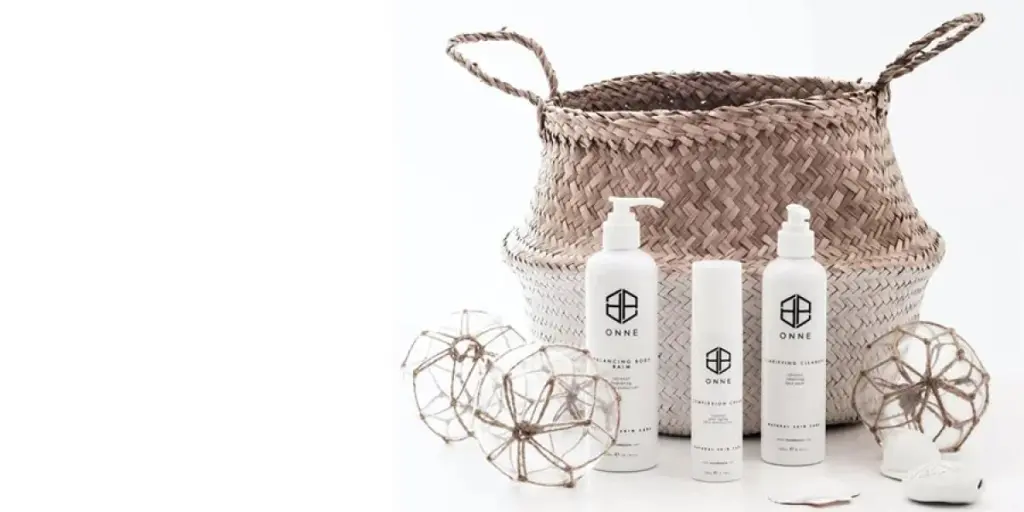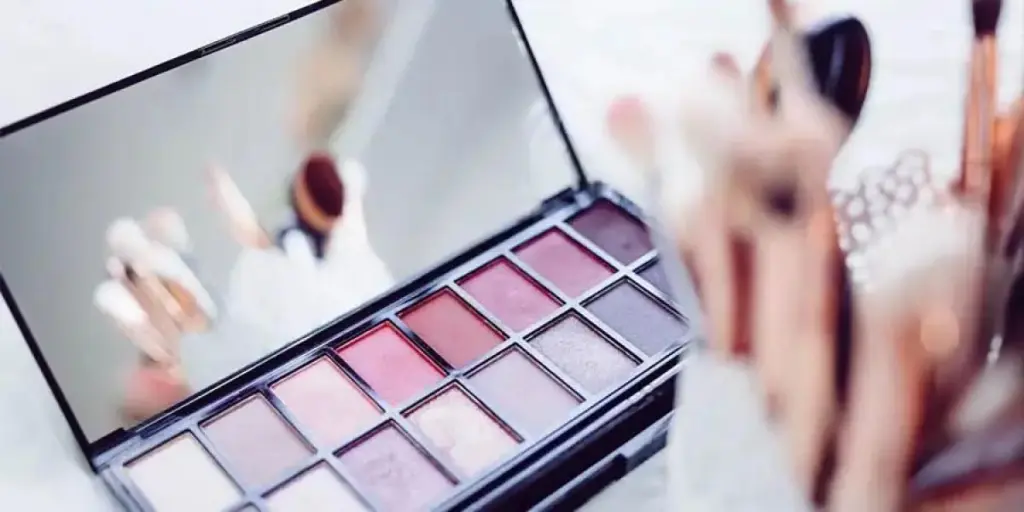Social media has given birth to countless beauty trends. But one that’s currently making the rounds and catching everybody’s attention is the dewy, radiant look. In truth, the fresh-faced, shiny look has quickly become a staple, pushing many people to find ways to recreate it.
So, how can sellers benefit from this sought-after aesthetic? By selling the right products, of course! Bronzers and highlighters are two major products that make achieving this runway-worthy look possible for regular folks.
Here’s everything businesses need to know about bronzers and highlighters before investing in them in 2024.
Table of Contents
Overview of the global bronzer and highlighter markets
Everything to know about bronzers
Everything to know about highlighters
In conclusion
Overview of the global bronzer and highlighter markets
Bronzers and highlighters are huge makeup industry segments, so they have different market sizes. According to experts, the global face bronzer market registered US $16.20 billion in revenue in 2022. They also expect it to experience more growth from 2024 to 2028 at a 7.25% compound annual growth rate (CAGR).
On the other hand, research shows the face highlighter market increased to US $15.9 billion in 2022, with experts saying it will reach US $25.15 billion by FY 2030 at a 5.9% CAGR.
The market drivers propelling growth for both segments include increasing demand for cosmetic products, shifting beauty standards, and social media and beauty influencers emphasizing a sun-kissed complexion.
Here are other important stats:
- Cream and liquid bronzers register the highest demand uptick, while powder highlighters will remain dominant over the forecast period.
- Asia-Pacific is currently the largest face bronzer regional market, while North America grabs the leading position for highlighters.
Everything to know about bronzers
Bronzers are the go-to products for adding depth and dimension to makeup looks. They offer warmer undertones and can easily give anyone a sun-kissed look.
Bronzers also add shades and shadows, helping to create a more chiseled and slimmer look. And they are great for adding a summery glow to consumers’ faces!
Types of bronzers to stock
Cream bronzers
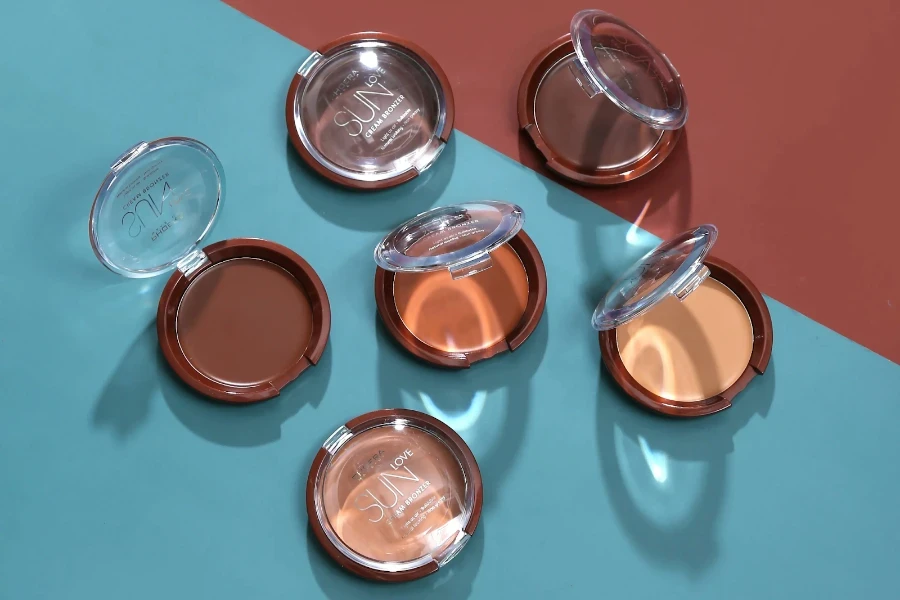
These bronzers did not start out as the easiest to use. Consumers often find them difficult to blend, making many people avoid using them. However, that’s a case of the past.
In addition to improved packing and shade variety, manufacturers now offer thin formulas that apply flawlessly to the skin. Recent cream bronzers offer softer, sheerer finishes that make them look more natural after blending.
Liquid bronzers
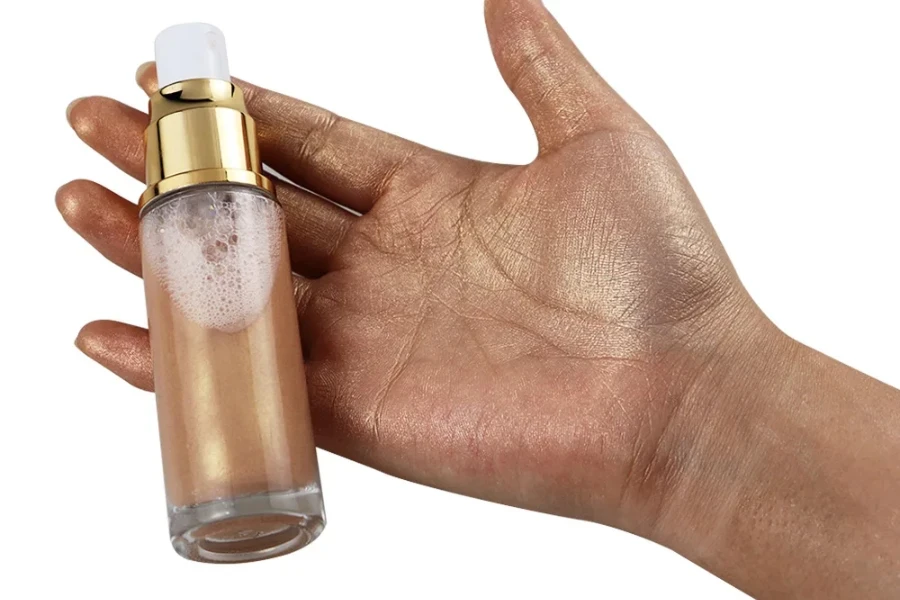
Liquid bronzers have runnier formulas than creams—usually packaged in tubes or droppers. In contrast to matte and shiny creams, liquid bronzers are perfect for adding shimmery or radiant effects that make the user’s skin extra glowy.
Powder bronzers
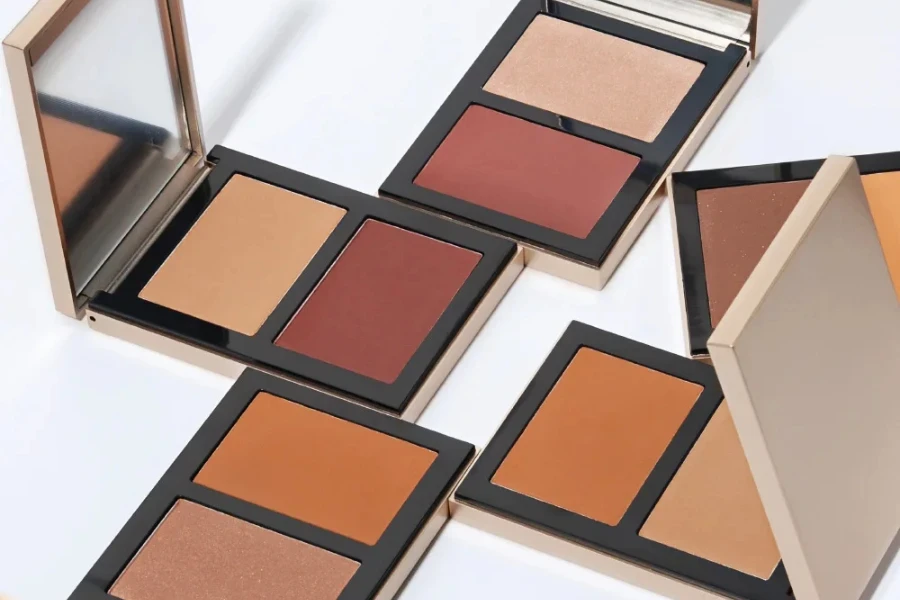
Powder bronzers are the most popular (and most common) option available. They’ve been a great choice for years, and for good reason. These bronzers are the easiest to blend once consumers get the right shade.
Although powder bronzers contain more pigment than other types, their blendability makes them ideal for beginners.
What to consider when choosing bronzers
The bronzer’s color
The first step to choosing the best bronzer for target consumers is matching its color with their skin’s undertones. Consumers can have any of the three skin undertones below—check them out to know the perfect bronzer color to stock up on.
| Skin undertone | Description and ideal bronzer color |
| Warm | Consumers with this undertone can have yellow, peach, or golden colors. Sellers can opt for golden brown, caramel, or other bronzers with warm undertones for this category. |
| Cool | Consumers with pink undertones have pink, red, and bluish colors. So, they’ll need soft brown bronzers, like lightly pigmented taupe. |
| Neutral | Such consumers have a mix of warm and cool undertones. They also avoid shades that are too warm or too cold. In this case, true browns, like chocolate, are the best options. |
The consumer’s skin tone
After determining the target undertone, next is finding out how light or deep consumers will want to go with their bronzers. What determines that is their skin tone. Generally, skin tones fall into four categories: fair, light, medium, or deep.
| Skin tone | Description and ideal bronzers |
| Fair | Usually, consumers with fair skin have neutral or cool undertones. Fair-skinned consumers can’t use deep shades—it’ll create too much contrast, resulting in an unnatural complexion. Instead, opt for very light peach colors that closely resemble blush, light beige, or light tan to satisfy these consumers. |
| Light | Light skin tones can go a bit darker than fair skin. Such consumers can even try medium shades like peach and golden bronzers. They also can’t go wrong with neutral shades, like dusty rose or rosy brown. Sellers can offer copper bronzers if their skin rests between medium and light (like olive skin tones). |
| Medium | Medium skin tones have the most versatility. They can work with almost any bronzer shade, from warm to neutral undertones, and even go 2–3 shades deeper. Cinnamon shade is a top pick for consumers with medium skin tones. But if their skin is more tan, they may need darker bronzer shades, like chocolate brown. |
| Deep | These consumers need bronzers with deep red undertones. Deep-skinned consumers need maroon or chestnut brown shades to see the color effects of bronzers on their skin. |
Everything to know about highlighters
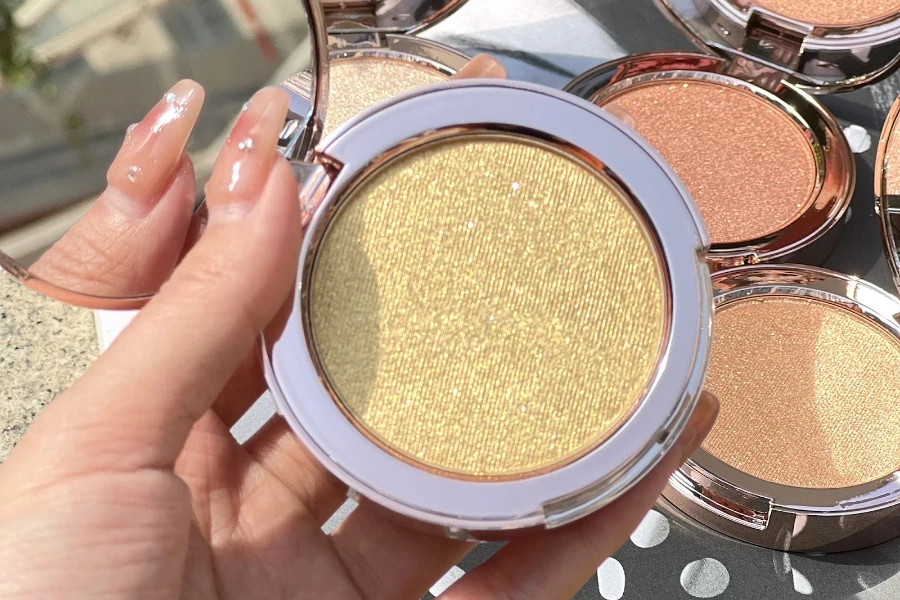
Highlighters are the key to achieving the sought-after lit-from-within glow. The best part about highlighters is that they reflect light. So many consumers apply them on the highest points of their faces or use them on areas where they want to stand out more.
Types of highlighter to purchase
Liquid highlighters
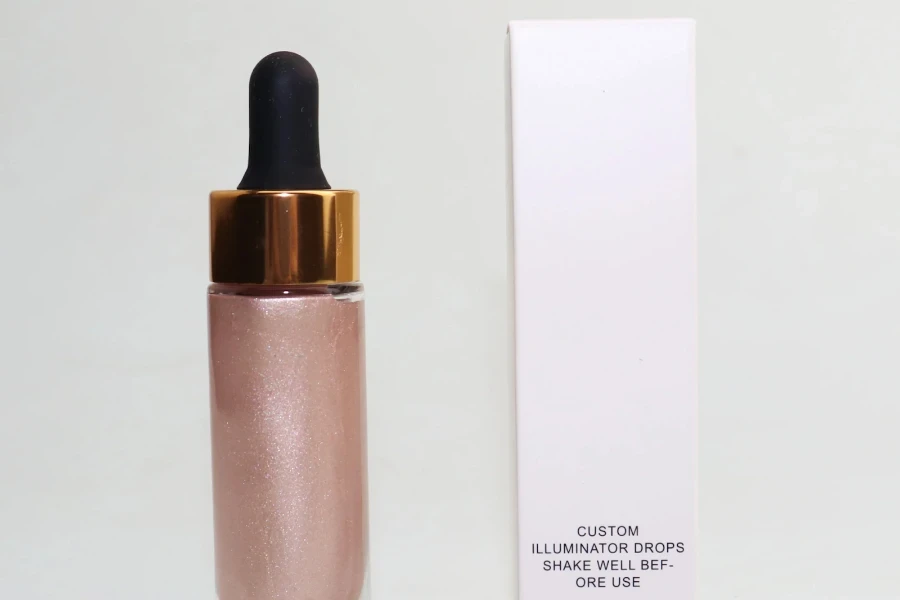
These highlighters are an easy way to get the trendy “glow-from-within” aesthetic. However, using too much may look too bright (blinding even). But thankfully, consumers can mix a drop or two with moisturizers for a seamless blend.
Stick highlighters
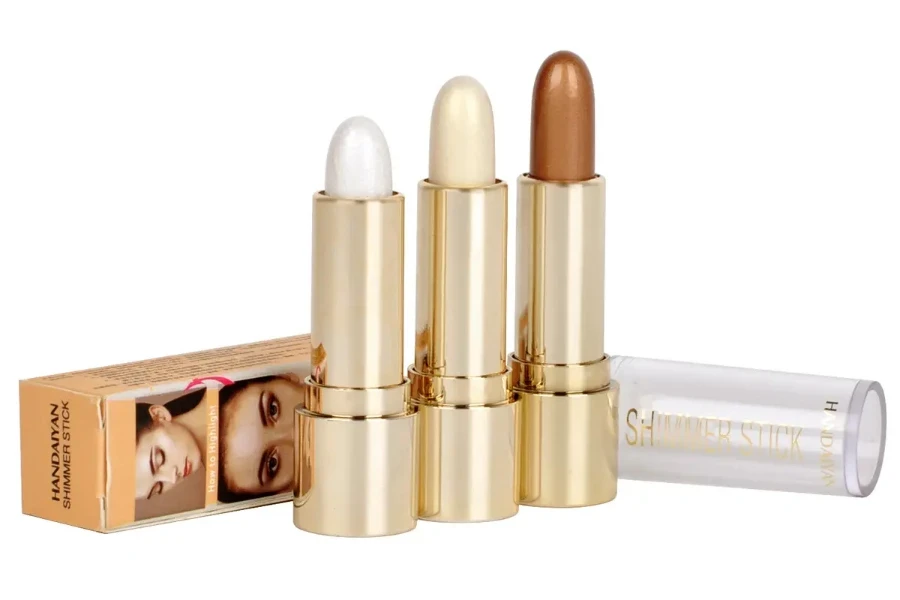
Stick highlighters are even easier to use than liquid variants. They’re also more precise since they focus only on important facial areas.
These highlighters are also the go-to for reaching those difficult-to-reach areas of the face, like under the brow bones or the eye’s inner corners. Although they require a little blending, stick highlighters remain the most travel-friendly option.
Powder highlighters
These highlighters are like shimmery versions of compact powders. Powder highlighters are not pigmented like their liquid counterparts and come in pressed forms. Consumers only need a fan brush stroke to add dimension and make their faces glisten with this product.
What to consider when choosing highlighters
The consumer’s undertone
Like bronzers, how good highlighters look depends on the consumer’s skin undertone. Consumers with warmer (more yellow) undertones, from tan to fair, look their best in champagne and gold highlighters.
Similarly, those with neutral and cooler undertones from medium to fair will buy more silver, pearl, and rose gold highlighters.
The target’s skin tone
The best highlighters are two times lighter than the user’s skin tone. Why? Sticking to more lightweight highlighters will create a more natural-looking glow and help prevent makeup from looking harsh or distracting.
Consumers with medium skin can use golden or bronze highlighters, while those with deep skin will prefer copper or bronzer highlighters.
The desired effect
Do consumers want a more natural glow? Offer them formulas with thinner, creamier textures and subtle shimmer. But if consumers want to go full glam, businesses must look for highlighters with a duo-chrome effect, like sheen combined with shades of pink, green, lavender, and aqua blue.
The consumer’s skin type
Ladies with textured skin (dry, acne-prone, or larger pores) will see better effects with cream or liquid formulas. Powder highlighters may make textured skin look rougher, but creams or liquids will melt into the skin for more seamless applications.
Women with less-textured skin can use powder highlighters just fine—especially if they also have excess sebum.
In conclusion
Bronzers and highlighters may be different products, but they form a great team when creating an amazing, dewy, glowy look. So, consumers need both products to get the dream look that is making the rounds on social media.
Businesses can sell these products in sets with a blush or market them individually. But before that, they must determine their target audience and consider their skin undertone, tone, type, desired effect, and texture before buying these beauty products in 2024.
